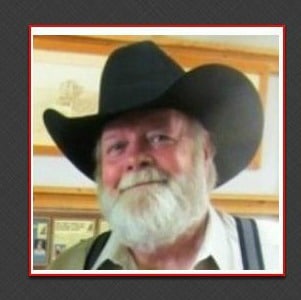
(By Fred Lundgren) On Christmas Eve morning, the electricity went off at our house and panic quickly spread among our younger guests. First, the TV sets went dark. Then, the desktop computers began to die as UPS back-up batteries failed. For a while, we were reassured by the sound of familiar alarms, but then suddenly, total silence. Could this be the end times? Is this the apocalypse?
Smart phones were quickly deployed and guests began calling each other from room to room. The panic began to subside when several millennials volunteered communal usage of their wireless data plans. The kingdom would be saved…crisis abated.
My wife and I reassured everyone that our electric bill was paid, while we quietly looked up a receipt to confirm it. To be more certain, I asked my son-in-law to go on a neighborhood reconnaissance mission and call the electric company. A few moments later, he returned with a full report. The power was off for 3,000 homes in Katy, Texas. Thank you Center Point Energy.
As the younger generation huddled around the smart phones with unlimited data plans, I began to think of the outage as an opportunity to listen to AM radio, so I went to my office and dusted off my old RCA SuperRadio III.
I couldn’t remember the last time I replaced the batteries, but to my surprise, it came to life with its signature popcorn sound when I pushed its big silver button. It’s alive! Wow…the AM band was extraordinarily quiet and responsive.
I scanned across the dial from 610 AM to 1590 AM. All the stations were as clear as a bell. Then, I decided to press my luck. I tuned to KTSA 550 AM in San Antonio and then I moved the dial slightly to the right and heard KLVI 560 AM in Beaumont, Texas. Every station was booming in loud and clear. I felt like a child with a new toy. I dialed up and down the band, experiencing the clear booming sound of AM radio without any noise or interference. It was a feast for the senses. It was beautiful.
After a few minutes, one of my daughters walked in and asked about the source of my entertainment. I pointed to my SuperRadio and said joyfully, “Listen.” She looked at the big black box and asked, “How can you listen with the Internet and electricity off?” I responded, “It’s my portable SuperRadio III.” Before I could explain further, she shrugged her shoulders, closed the door, and went back upstairs, convinced that her Dad was conducting some sort of high-tech experiment.
In a manner of speaking, her assumption was correct. I was listening to AM radio in a big city without the interference of computers, wireless modems, and an overloaded electrical grid. For the first time in my recent memory, the “Senior Radio Band” sounded beautiful. Sadly, my experiment ended with preordained results when the electric power was restored.
Instantly, the noise on the AM band was so bad inside my home that it even interfered with KTRH 740 AM, the legacy 50 kW blowtorch of Houston. Other powerful stations like KGOW 1560 AM and KSEV 700 AM couldn’t override the noise, so obviously the lower-powered stations didn’t have a chance.
My impromptu experiment reaffirmed that noise injection is literally destroying AM radio, which is the most efficient form of point-to-multi-point communications ever created in the history of the world.
As a class, AM radio licensees and AM listeners have been severely damaged. The “goodwill value” of many AM stations has evaporated.
I think it could be successfully argued in a federal courtroom that AM station licensees and AM listeners have not received “due process.” The FCC, by its failure to regulate interference, has aided and abetted those who are causing the interference. Their inaction has allowed every POS imaginable to take a steaming crap on the sound of AM radio.
The damage is real and probably totals tens, if not hundreds of billions of dollars.
The manufacturers, distributors, and retailers who market AM noise-makers have recklessly caused irreparable harm to AM radio and it’s time for us to fight back as a class and make them pay.
Fred Lundgren is the CEO of KCAA (Yoma Linda, CA) and can be reached by e-mail at [email protected]






In 1992 I put back on the air a bankrupt class IV 1230 station in suburban Portland, OR.
Being an audiophile, we tweaked the audio to sound as close to hi-fi as possible. And it did sound quite nice. The Optimod AM processor coupled with the C-QUAM stereo system yielded in my car a clean, big bottom and reasonable high end sound. Maybe stereo gives the perception that it better than mono AM? At home, my Tuner was mono, but again, a very clean sound.
Our FM was one of the first all digital from the studio to the exciter stations in the Portland metro, and our listeners enjoyed the sounds. We used the Dolby FM digital broadcast system for STL from the studio to the transmitter, though tweaked down from 16 bits 44.1 khz. to 8 bits and 22,050 khz so we could use the STL bandwidth for our AM STL.
Great article Fred. You are right on the money about the FCC. It’s seems like they have done everything to work Against AM surviving.
We shouldn’t have to give up an entire radio band, because the FCC keeps making one BONEHEAD decision after another.
Unfortunately , your friend, Dave Mason is right… from the general public’s perception, the AM Band is noisy
and cluttered.
Here in the UK the number of listeners to Medium Wave (AM) has dropped as the interference to MW/AM transmissions from other electrical sources has increased and this has been one of the main reasons people have given-up listening on MW/AM. Across much of Western Europe MW/AM is being turned-off and the Norwegian national broadcaster NRK started to shut down its FM broadcasts on 2nd January as its DAB+ transmissions cover around 99.5% of their population.
DAB Digital Radio transmissions, first started by the BBC in 1995, has brought us a far wider choice of radio listening with the BBC’s DAB National Multiplex reaching around 98% of the UK population with 11 national stations compared to just 5 of these stations on FM or MW. The local and national commercial DAB multiplexes reach between 75-90% of the population so today in rural Yorkshire I have the choice of 58 DAB/DAB+ radio services and just 13 on analogue of which 12 are simulcasts of stations I can receive more clearly on DAB/DAB+.
So on this side of the pond the days of MW/AM broadcasting are nearly over.
On our side of pond, the FCC always seems to make the wrong decision after waiting too long to make any decision at all.
Walwarts, LED lighting ballasts, florescent fixtures, computers, switching power supplies, leaky power line digital control, the end of RF polluters is seemingly endless. Yes it is an FCC failure to apply existing laws that has led to this. You’ve hit the nail squarely my friend unfortunately it seems to be an opened Pandora’s box.
The best way to prosper with a stand alone AM these day is to get FM translators. It’s like abandoning the sick patient, thus guaranteeing the patients death, but in so doing, the infection goes away.
Well, I know in order to reduce the noise levels for amateur, shortwave listening, and AM listening, I had to move an antenna away from the house and the powerlines. I’d built a Windom antenna and ran the coax to a tree about 60ft away from the house. A Windom is an off-centered dipole antenna. One end went across a creek valley id is over 100ft. The other end is made from what was left of a 60ft longwire antenna. The results? Noises reduced by a lot, but eliminated. Not just the AM band is affected here where I live, but the FM band even gets a lot of noise from DSL MODEM’s, computers, smart phones, security systems, microwave over, other various wi-fi devices, etc. Yep, it seems that appliances are made to work higher in frequencies to get away from noises, but noises also seems to be climbing higher and higher in frequencies as well.
The average consumer is clueless and won’t lift a finger to remove the noise. They just go away.
Fred, your task for 2017 should be to clean up all those noise sources in your own home and neighborhood, and make the SuperRadio a shining example of what radio is meant to sound like. Show all your friends and neighbors, and help them fix theirs, too.
The swamp if filling faster than I could ever drain it.
Similarly, the HF amateur radio bands become very clean when the power goes out. I don’t know if it’s power line noise or devices on the line, but it sounds great when the AC power goes out!
I remember a couple of years ago we also had an outage, I scanned the AM band, both Long and Medium Wave, interference free, great, could hear stations from all over Europe, sadly most of those stations have closed their AM frequencies down, but it was the last opportunity to listen just for a short while to them, the power soon came back and it was back to listening to the same stations, but this time on the Internet.
It’s both
A very passionate article about AM radio. I grew up in an AM only era 300 miles North of Detroit.
Hi-Fi was not yet in the vocabulary. It was a joy as a child to listen to WJR, WBBM, WSM, WLS, WOR,
WTAM. WBT, WWL, WEAF, WCKY, KMOX, WGM, KTSP. WCCO, KDKA, WBZ, and dozens of others.
I consider myself an FM pioneer having started FM stations in the 1950’s in Los Angeles and San Francisco. People didn’t know what the letters FM meant. But I still love AM radio. And with all the
interference problems to contend with, I still believe there is a future for AM radio. A substantial amount of all radio listening is in automobiles. AM noise is at a minimal in the auto. The immediate problems are that many AM stations do not operate with the latest technology and lack exciting programming. My Los Angeles 1260 station is the only all music AM station in the market.
The latest technology and more creative programming would go a long way in helping AM survive.
Thanks Saul. I should have spent my life building FMs too.
My love affair with AM has been Unrequited.
AM radio is a casualty of technology.
I doubt that the FCC could have done much about it. Take a little bit of noise (it would be extremely difficult to get rid of it all, never mind cost prohibitive), but multiply it by millions or billions of devices, and you get what you have today.
Unless, of course, we’re all willing to give up our smartphones, computers, routers, etc. etc.
Actually yes, it was totally their (FCC) decision to place exemptions on the part 15 “noise makers”. Would you say the same thing if smart phones and Plasma TV sets had been built to receive unlimited destructive interference?
Yet we are wasting 76~88 MHz on a handful of low power TV stations and a full power TV station here and there when that spectrum could be put to better use as the new home for these stations.
I have been advocating the expansion of the FM band for over 10 years. Failure to do so is another prime example of the FCC doing the wrong thing.
I have been advocating an expanded FM band for over 10 years. Its a perfect long term solution and the FCC’s failure to do just adds to their long list of mistakes.
21st century economics won’t allow another realignment of the medium, will it Fred ? Expanding the FM band to accommodate failing AM stations would require additional purchases by AM operators, additional purchases by consumers and then you’d have to wait as the new receivers got into the marketplace. How long do the AM operators stay on two frequencies? Two years? Ten? Twenty? Reading financials about media companies doesn’t show a lot of money for capital expenditures. Many (as you pointed out) spent a lot of money on the IBOC failure and expecting them to invest in new facilities to move to a new band is a tough one. IBOC-even if the digital signal could somehow reach parity with the analog RF-didn’t create a large market for receivers. A new FM band for existing AM stations might not work either. I’d love to be wrong-and you make some very good points here, but do the iHearts, Cumulus’s and others really want to invest in something that would take at least 20 years to grab hold ?
I wish Michelle Bradly would run for FCC boss!!!
AM has also plagued itself with FCC and industry approved IBOC hash that kills reception of any station with a less than “blowtorch” level signal.
Chuck, the whole IBOC debacle hasn’t helped at all. In So. California we’re slowly moving out of the IBOC realm..with fewer and fewer stations running it on AM. Back in the early days of IBOC Bob Savage, owner of 1040 WYSL tried to get WBZ (1030) to turn off its IBOC signal at night because it spilled over into his nighttime signal. In the 80s the NTSC limited AM bandwidth to 10khz – that limitation obviously trashed by IBOC. I can SEE a local 5k station’s transmitter from my house, but their HD signal is impossible to receive. It’s a great system- for Ibiquity and no one else.
Lets be truthful about IBOC. It was a failed attempt by a few large companies to privatize digital AM. I never bought into it and those who did have lost money and caused problems for their neighboring stations.
and one of the other factors ,, in modern housing construsction,, the requirements for “energy efficency” require foil backed insulation thus effectivly shielding the whole house from am rf ,, add the noise,, also noteworthey,, the stations transmit good frequency respons,, the radio manufacturers are the quality problem ,providing narrow bandwidth,, and sometimes the fm de emphisis curve in the audio circuit,,
Harv, you are sooo right about the quality problem. However some stations have intentionally limited their high frequency cut-off to 5khz to clean up the aforementioned IBOC signal. It’s a vicious combination. In ’73 I bought a car with an AM/FM tuner. The first one I ever had-and it made the AM station I was working for sound TERRIBLE. I then bought another-with an AM only radio. The difference was amazing. That was over 40 years ago..and it hasn’t improved one iota. Can it ever be fixed ?
YES!!!
Good article, Fred. You’ve hit on just some of AM’s issues – but that’s one of the great ones. Truth is not everyone has the “super selective” SuperradioIII. I can’t tell you how many hotels have the Sony clock radios that get nothing but noise on the AM band. I’ve got my trusty $400 tuner/surround sound amplifier in the family room that has an AM and FM band settings. AM is useless. But even if I lived next door to the transmitter, it would still roll off the highs at 2.5 khz if I was lucky. ‘Superradio” circuits are apparently only in the GE radios..and many won’t shell out the $49 to buy something that only has a radio. It’s about time to start getting on the FCC to fix these issues–or put the AM band out of its noisy misery.
AM is not noisy. That was the point of my article. It’s the noise makers that the FCC approves, or allows to be sold, plus a lack standards for AM receivers. The FCC has failed their mission, like much of government.
I get what you’re saying Fred. Sadly, from the consumer’s viewpoint, AM IS noisy. Everything else you say (about the mission failure) is more than right-on.
Thanks, Fred. In a lot of markets and during a local crisis, the stations aren’t on the job.
And yes, I do appreciate the value of an AM signal that is allowed to run clear.
Working for a 50,000 watter at 660 did give us a sense of superiority. 🙂
Equality would be just fine.
Ronald, I’m not sure how your question relates to my article but regardless, I was scanning. If you are asking if news/talk stations report on power outages, the answer is yes.
A noble contention, Fred. But, what are the chances?
Meanwhile, did any of the local AM stations provide any pertinent information on the power outage being experienced in your community?